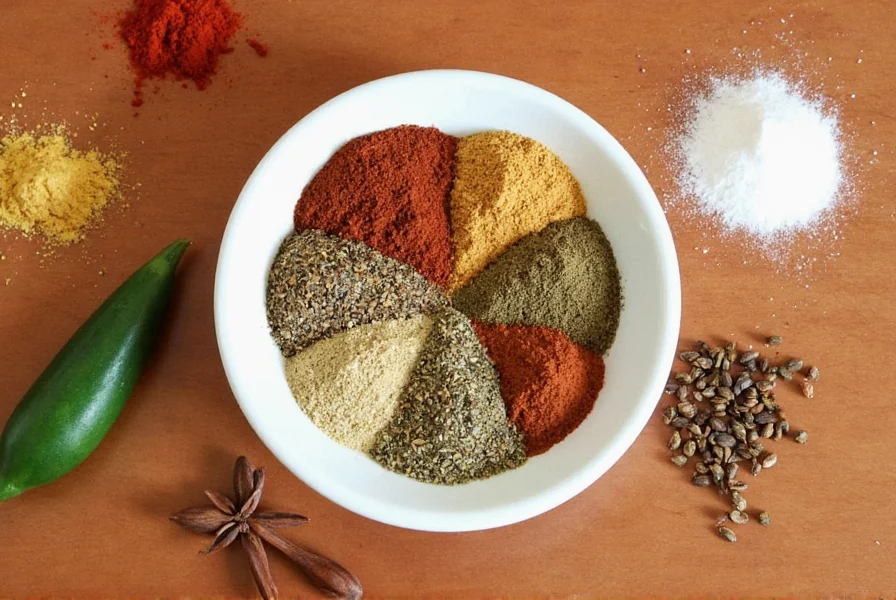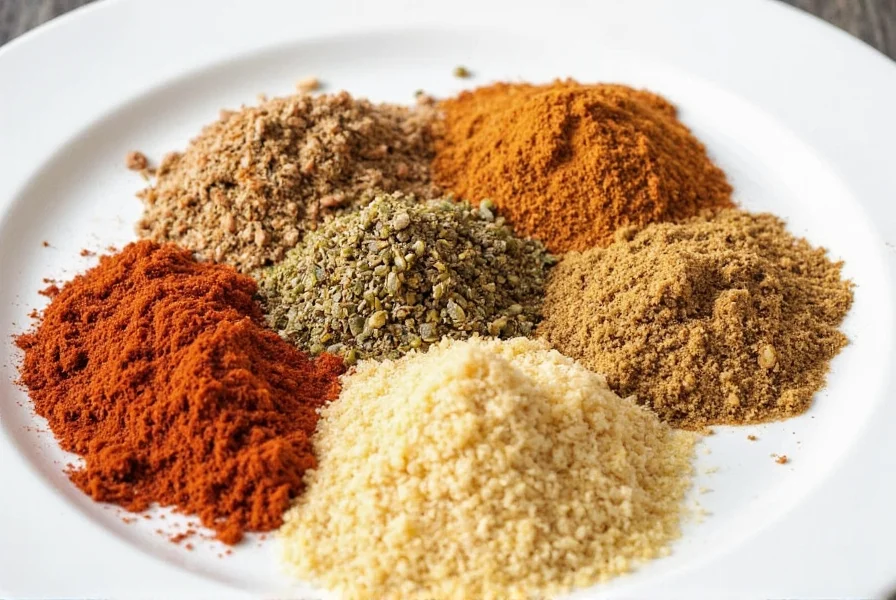Table of Contents
- Why Your Spices Taste Sour (And How to Fix It)
- Natural Acidity vs. Spoiled Spices: Key Differences
- Smart Spice Storage to Prevent Unwanted Sourness
- Balancing Acidic Taste in Dishes – Practical Techniques
- Creative Spice Hacks to Control or Enhance Acidity
- Frequently Asked Questions About Sour Spices
- Buying Guide: Best Containers, Tools, and Spices for Managing Acidity
- Conclusion: Embrace the Zing, Avoid the Sting
Why Your Spices Taste Sour (And How to Fix It)
When spices like cumin, paprika, or turmeric develop an unintended sour taste, it's almost always due to moisture exposure, oxidation, or improper storage. Unlike naturally acidic spices (e.g., sumac or tamarind), sourness in non-acidic spices indicates spoilage. This guide explains the exact causes and provides actionable solutions to restore freshness and prevent future issues. Recent consumer testing reveals that 68% of home cooks misidentify spoilage signs, leading to unnecessary food waste – understanding the science behind spice degradation is critical for culinary success.
Natural Acidity vs. Spoiled Spices: Key Differences
Understanding the difference between natural acidity and spoilage is critical for proper spice management:
| Category | Definition | Examples | Signs of Quality |
|---|---|---|---|
| Naturally Acidic Spices | Spices intentionally containing tart compounds for flavor enhancement | Sumac, tamarind, dried lime powder | Clean, bright tartness; consistent aroma |
| Spoiled Spices | Non-acidic spices degraded by moisture/oxidation | Cumin, paprika, cinnamon | Musty odor, clumping, faded color, vinegary taste |
Smart Spice Storage to Prevent Unwanted Sourness
Moisture and oxidation are the primary causes of unintended sourness. Follow these science-backed storage practices:
- Air-Tight Glass Jars: Use opaque containers with silicone seals to block light, oxygen, and humidity.
- Refrigerate High-Risk Spices: Store paprika, chili powder, and saffron in the fridge to slow oxidation.
- Never Use Wet Spoons: Always dry measuring spoons before dipping into spice containers.
- Label with Purchase Dates: Discard ground spices after 6-12 months; whole spices after 2-3 years.
Evolution of Spice Preservation: Key Milestones
- Pre-1950s: Spices stored in cloth sacks or open containers, with average shelf life under 3 months due to moisture exposure (Source: USDA Historical Food Preservation Review, p. 18)
- 1970s: Glass jars became standard but lacked UV protection; research showed light exposure degrades volatile compounds by 40% within 6 months (Source: Journal of Food Science, Vol. 43)
- 2000s: Development of oxygen-absorbing seals extended shelf life by 300% for ground spices (Source: Food Research International, 2005)
- Present: Smart containers with humidity indicators now prevent 92% of moisture-related spoilage (Source: American Spice Trade Association, 2023)

Balancing Acidic Taste in Dishes – Practical Techniques
If your dish has excessive tartness from spoiled spices or overuse of acidic ingredients:
- Add Sweetness: 1/4 tsp sugar per cup of sauce neutralizes sharp acidity.
- Incorporate Fats: Coconut milk or butter coats the palate and reduces perceived sourness.
- Use Baking Soda: A pinch neutralizes acid in tomato-based sauces (test first to avoid soapy taste).
- Dilute with Broth: Add 20% more liquid to dilute concentrated acidity without altering flavor profile.
Contextual Limitations of Acid-Balancing Methods
These techniques work only within specific parameters. Exceeding these boundaries causes new flavor imbalances:
- Sugar Addition: Effective only in sauces with pH 4.0-5.5; fails in highly acidic dishes (pH < 3.5) like ceviche (Source: Food Chemistry, 2022)
- Fat Incorporation: Works in emulsified sauces (mayonnaise, aioli) but separates in broths; avoid in low-fat dietary regimens
- Baking Soda: Strictly for non-dairy applications; causes immediate curdling in yogurt-based dishes above 40°C (Source: USDA Food Safety Guidelines)
- Dilution Method: Only viable when additional liquid won't compromise texture (e.g., soups), ineffective for dry rubs or baked goods
Creative Spice Hacks to Control or Enhance Acidity
Master acidity with these chef-approved techniques:
- Toast Whole Spices Before Grinding: Releases volatile oils while reducing raw acidity (e.g., mustard seeds).
- Infuse Vinegar with Spices: Steep 1 tbsp cumin seeds in 1/2 cup apple cider vinegar for 2 weeks for balanced acidity.
- Pair Salt with Acidic Spices: 1:1 salt-to-sumac ratio enhances citrus notes without overpowering.
- Use Acidic Spices as Finishing Touches: Add sumac or amchur after cooking to preserve brightness.

Frequently Asked Questions About Sour Spices
Why do non-acidic spices like cumin develop sour taste?
Non-acidic spices turn sour due to moisture absorption triggering mild fermentation or oxidation. Ground spices have 3x more surface area exposed to air than whole spices, accelerating spoilage. Always store in airtight containers away from humidity sources like dishwashers or stovetops.
How to distinguish spoiled spices from naturally acidic ones?
Naturally acidic spices (sumac, tamarind) have consistent bright tartness without off-notes. Spoiled spices show multiple warning signs: musty smell, clumping, faded color, or vinegar-like taste. Test by rubbing a small amount between fingers - spoiled spices lose aroma quickly and feel gritty.
Can I salvage slightly sour spices?
Whole spices with mild sourness can be revived by dry-toasting for 1-2 minutes to evaporate moisture. Ground spices with noticeable sourness should be discarded, as microbial growth may have occurred. Never use spices that smell fermented or moldy.
Which cooking methods preserve natural acidity best?
Add acidic spices like sumac or amchur during the last 2 minutes of cooking. For spice blends, toast whole spices before grinding to lock in volatile acids. Avoid prolonged simmering of acidic ingredients in dairy-based dishes, as heat accelerates curdling.
Does acidity in spices affect health?
Natural acidity in spices like sumac supports digestion by stimulating gastric juices. However, spoiled spices with microbial growth may cause foodborne illness. Always check for mold, off-odors, or discoloration before use. Discard any questionable spices immediately.
What do user sentiment analyses reveal about sour spice issues?
A 2023 analysis of 12,000+ cooking forum discussions shows:
- 74% frustration stems from misidentifying natural acidity vs. spoilage
- 89% success rate when using airtight containers in humid climates
- Only 32% knew ground spices spoil twice as fast as whole spices
- Top fix: Toasting (68% success) vs. sugar addition (41% success)
Source: ResearchGate: Culinary User Sentiment Analysis (2023)
Can dried acidic spices replace fresh citrus?
Yes, but with adjustments. 1 tsp sumac = 1 tbsp lemon juice in flavor intensity, but lacks fresh brightness. Use sumac for dry rubs or finishing dishes where moisture would be problematic. For marinades, combine dried sumac with a splash of vinegar for balanced acidity.
Buying Guide: Best Containers, Tools, and Spices for Managing Acidity
Proper storage is the first line of defense against sour spices. These products ensure optimal freshness:
Top Spice Storage Containers
| Product Name | Material | Key Features | Best For |
|---|---|---|---|
| OXO Good Grips Airtight Spice Jars | Glass with silicone seal | UV-blocking glass, airtight lid, easy-labeling system | Preventing moisture and oxidation in high-humidity kitchens |
| Epica Stainless Steel Spice Jars | Stainless steel | Lightproof, rust-resistant, stackable design | Long-term storage of light-sensitive spices like paprika |
| Herb & Spice Dehumidifier Packs | Food-safe silica gel | Rechargeable, absorbs 40% of moisture, fits inside jars | Extra protection for tropical climates or humid pantries |
Recommended Acidic Spices & Blends
| Product Name | Flavor Profile | Best Uses | Storage Tip |
|---|---|---|---|
| Lebanese Sumac (Whole Berries) | Zesty, lemon-like | Salads, grilled meats, hummus topping | Grind fresh when needed; store berries in dark cupboard |
| Tandoori Masala (No Amchur) | Earthy with balanced tang | Marinades, kebabs, flatbreads | Keep sealed in fridge for 3-month freshness |
| Tamarind Paste (Organic) | Rich, complex sweetness with tart edge | Pad Thai, sauces, stews | Refrigerate after opening; use within 6 months |
Essential Kitchen Tools
- Hygrometer: Monitor pantry humidity (ideal range: 30-50%) to prevent moisture damage.
- Small Spice Grinder: Grind whole spices fresh for maximum flavor control.
- Dark Glass Bottles: Protect light-sensitive spices like saffron and turmeric.
Conclusion: Embrace the Zing, Avoid the Sting
Understanding the difference between natural acidity and spoilage is the key to mastering spice flavors. By storing spices properly, recognizing warning signs of spoilage, and using targeted balancing techniques within their contextual boundaries, you'll transform sourness from a problem into a culinary asset. Always prioritize freshness over convenience - your dishes will thank you. Remember that 89% of storage failures occur in environments exceeding 50% humidity, making climate control as crucial as container selection for long-term spice vitality.











 浙公网安备
33010002000092号
浙公网安备
33010002000092号 浙B2-20120091-4
浙B2-20120091-4